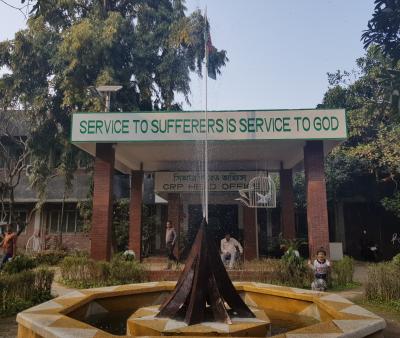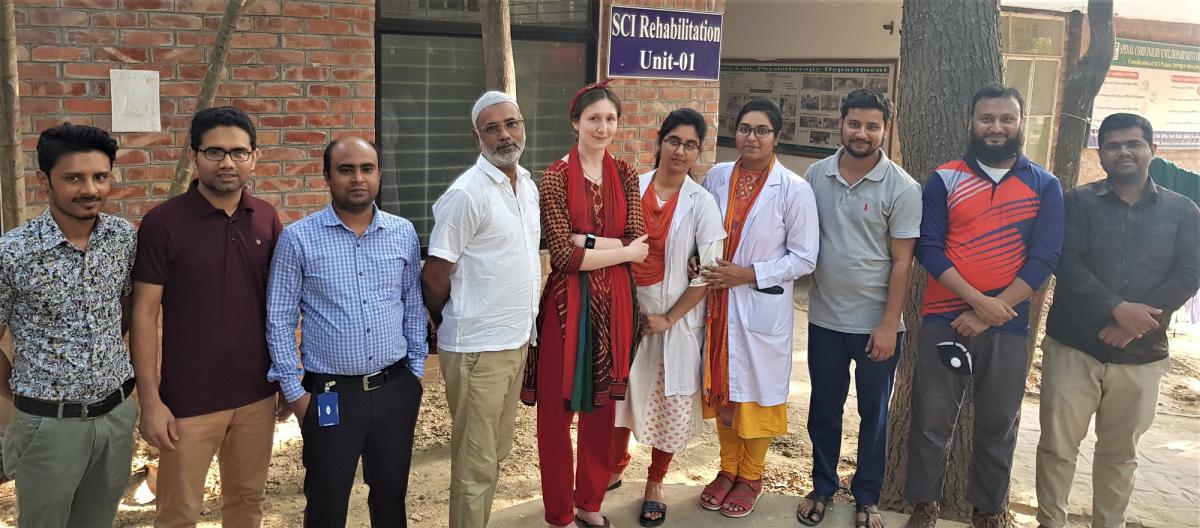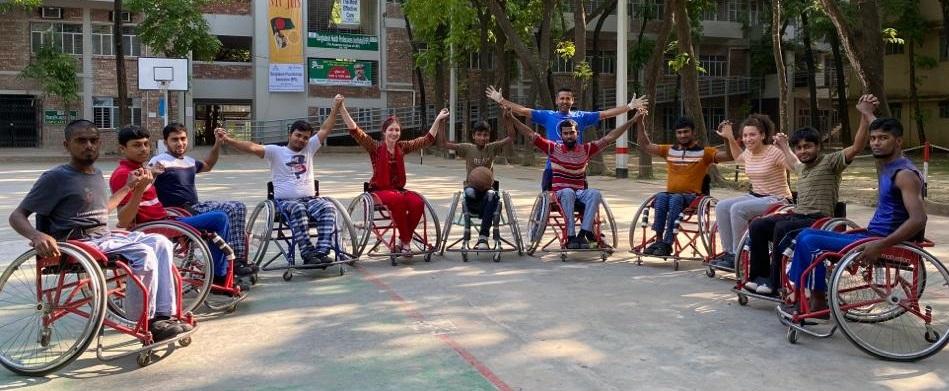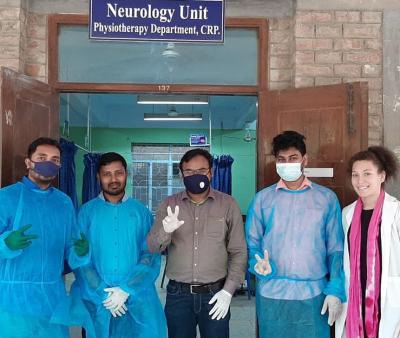Second year York St John University students Imogen and Aaliyah were on elective placement in Bangladesh when the Covid-19 pandemic was declared. In the face of restrictions, the students continued working at the Centre for the Rehabilitation of the Paralysed. Back on British soil, Imogen Clowes recounts her experiences.

In the spring of 2020, I undertook a placement at the Centre for the Rehabilitation of the Paralysed (CRP) in Bangladesh alongside my classmate, Aaliyah. Valorie Taylor, who received her Honorary Doctorate from York St John University, founded the largest Spinal Cord Injury (SCI) centre in Asia 40 years ago and has since invited second-year students to spend 10 weeks on placement and gain valuable experience.
Funded independently (with some help from the Learning Support Fund) and after a lot of organisation, I was soon flying halfway across the world. I chose to work in the SCI Unit, feeling this was an unmissable opportunity, while Aaliyah opted for neurology. Luckily for us, we chose the only two departments in the centre to remain open.

Before the Covid-19 restrictions, my days started around 8.30am with providing treatments, where each SCI patient received 30-45 minutes of therapy from the physio and the occupational therapist. Between 12 and 1pm we convened in the office to write notes, followed by an hour break for lunch to allow for prayer, eating and napping. Finally, between 2 and 5pm, patient activities took place. This was my favourite part of the day!
The afternoons started with group therapy and I delighted in watching the lead physio shout out instructions to the lines of wheelchairs as the patients counted the exercises in unison. Next, those in wheelchairs completed a skills session involving a difficult obstacle course of going over poles, getting out of holes, rolling over gravel and tackling stairs forwards and backwards. Patients who were more mobile practiced their walking with various orthotics and frames.
The afternoons ended with sports where Aaliyah and I discovered our love of wheelchair basketball! While the spread of the virus led to the suspension of most afternoon activities, much to our delight, basketball continued and was extended as it took place outdoors. Through this, we made friends with the patients, while providing much-needed entertainment to those who watched from the side-lines. Eventually, however, even basketball stopped as the two-metre distancing could not be maintained.

Our accommodation was on site and due to long 5.5 day weeks, we felt comfortable and welcomed around campus. Aaliyah and I often finished our days discussing case studies, treatments and pathologies we had come across. Aaliyah was particularly shocked at the number of Guillain-Barre Syndrome and Transverse Myelitis patients. My observations led me to read around the various ways the patients obtained their spinal cord injuries, including electrocution, falls from height and motor accidents.
The impact of Covid-19
At the end of March, the coronavirus saw the Centre close its paediatrics, MSK and outpatient departments and staff numbers reduce by at least half (due in part to the stopping of buses). Other staff were put onto a temporary rota.
With many staff on leave, including my supervisor who left three-weeks into my placement, we were heavily relied upon for our help which we eagerly provided. I was allocated my own ward, where I managed and treated patients unsupervised. The immediate autonomy thrust upon us was at times stressful, though senior staff were always there to help where required. On the women’s ward, which had 15 patients, I often worked with one other female physio.

The CRP also introduced more Personal Protective Equipment (PPE) including gloves, masks and aprons (while the men also wore goggles and hats). However, due to short supplies, our aprons were washable as opposed to disposable and we used one pair of gloves for the whole day.
Like the UK, the Bangladesh government implemented a lockdown. This saw the closure of non-essential shops and a 6pm curfew. While the district we were in had no Covid-19 cases while we were there, many people wore masks (though this is common practice due to the pollution and dust). With the centre in an enclosed campus with a guarded gate, Aaliyah and I had to request passes to go outside to visit the nearby shop.
On the 29 April, eight weeks into our placement, we flew home on a government repatriation flight with British Airways. By this time, the number of reported cases of Covid-19 in Bangladesh was around 100 and most of the restrictions had been lifted. This included the Centre’s afternoon activities, which the patients eagerly returned to.
While we were disappointed to fly home three weeks early, we are grateful to the CRP for our new outlook and perspective on physiotherapy. We hope to return one day to help the cause by offering our experiences from the NHS.
Visit Imogen's blog to read more about her experiences in Bangladesh.
Number of subscribers: 1



































